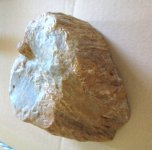http://www.google.com/url?sa=t&rct=...r4CoAw&usg=AFQjCNF01AXmEQR_F7lPpBaVXGpfBOYX3A
This is a 319 page OCS report with some very interesting information, including a nice Bibliography of sources
Some interesting tidbits from the compiled data:


 click the images until you can see them !!!
click the images until you can see them !!!
This is a 319 page OCS report with some very interesting information, including a nice Bibliography of sources
Some interesting tidbits from the compiled data:


 click the images until you can see them !!!
click the images until you can see them !!!



